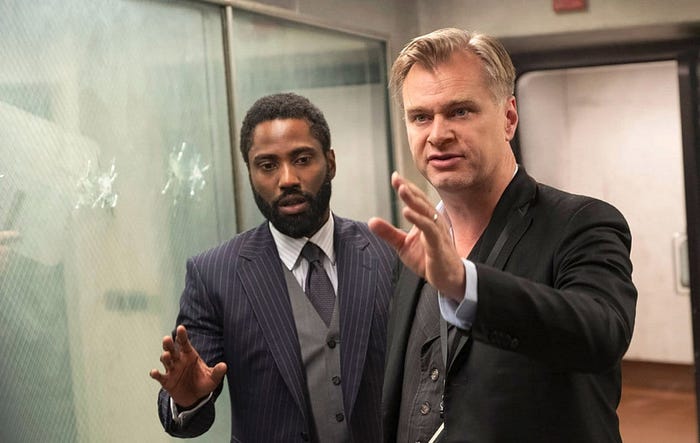Member-only story
Tenet Plot Explained
Warning: This article contains massive spoilers.

One big loop
The whole film is a big loop, starting on ‘the 14th’ at the Kiev Opera House and ending on that same day at the Soviet closed-city of Stalask-12 and coast of Vietnam. The story tracks four characters — Protagonist, Neil, Kat and Sator — traversing a month forward in time, then a month inverted.

During the forward journey, Sator and Tenet (Protagonist, Neil, Ives and team) compete to get their hands on an elusive case of plutonium-241. Protagonist thinks Sator wants it to start World War III. Sator actually wants it in order to fully assemble the Algorithm, a doomsday device with the power to reverse entropy on a global scale. Its activation would instantly destroy the world. The forward journey culminates in an Estonian highway heist, where Sator dupes the Protagonist into giving him the plutonium.
The second half of the film sees Tenet chase Sator through the inverted journey all the way back to the 14th, culminating in a final battle to stop him from activating the Algorithm.
Chronology
Forward month: Sator’s forces assaults the Kiev Opera House on a day referred to as the 14th. The Protagonist foils his plans to acquire the case of plutonium, but he’s captured and injured during the operation — spending a couple of weeks recovering on a ship. On the same day as the Opera assault, a massive explosion occurs at the Soviet closed-city of Stalask-12. This is shown at the end of the film.
The Protagonist gets busy on around Week 3. He learns about inversion from Laura (a scientist), meets Neil (secretly a Tenet operative from the future), gains information from Priya (a Tenet operative masquerading as an arms-dealer), meets Kat (Sator’s wife), crashes a plane at Oslo Freeport (in order to gain Kat’s trust), and finally, secures a meeting with Sator.
Along the way, Protagonist learns that Sator has been hiding secret time-inversion machines called turnstiles at freeports around the world. At the…
